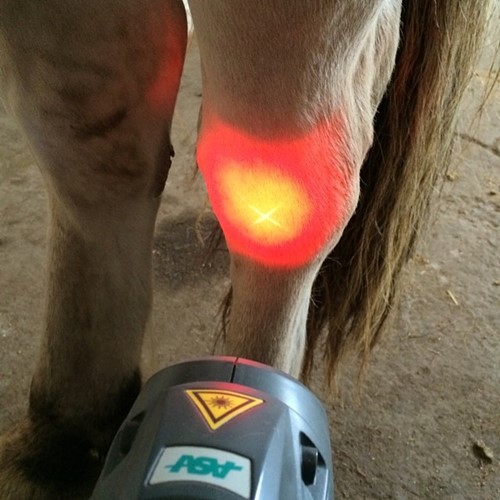Equine Therapy Programs: Transforming Lives One Trip each time
Equine Therapy Programs: Transforming Lives One Trip each time
Blog Article
Reviewing the Efficiency of Laser Treatment in Horse Treatment for Injury Rehab
The assessment of laser treatment's efficiency in equine injury rehab pivots on multiple elements, consisting of healing time, discomfort mitigation, and cells regrowth. Medical studies recommend significant improvements in conditions like tendonitis and osteo arthritis, credited to boosted cellular feature and elevated ATP production. Vets regularly observe remarkable outcomes with laser therapy contrasted to conventional techniques, placing it as a critical element in equine treatment. Nonetheless, the requirement for continual monitoring and tailored therapy plans can not be overemphasized. What certain clinical evidence sustains these cases, and how do veterinarians carry out these protocols in practice?

Understanding Laser Therapy
Laser treatment has actually come to be a crucial device in vet medication, specifically in the therapy of equine conditions. Known for its non-invasive nature and efficacy, laser treatment entails the application of certain wavelengths of light to promote tissue repair work and reduce swelling. This restorative technique is increasingly preferred for its capacity to speed up the healing process in steeds struggling with a range of musculoskeletal injuries and persistent problems.
The primary system behind laser therapy is its capability to enhance mobile functions. Furthermore, laser therapy advertises vasodilation, improving blood circulation and oxygen delivery to broken tissues, hence speeding up recuperation.
In equine medicine, laser treatment is particularly valuable for conditions such as tendonitis, osteo arthritis, and wound recovery. The technique is lauded for its pain-relieving residential or commercial properties, allowing steeds to regain wheelchair and function much more quickly. Veterinarians additionally value its minimal side impacts contrasted to other therapy modalities, making it a reliable and risk-free choice for equine treatment.
How Laser Treatment Functions
To recognize how laser therapy functions, it is necessary to explore the interaction between light energy and organic cells. Laser treatment, also called Low-Level Laser Therapy (LLLT) or photobiomodulation, utilizes details wavelengths of light to penetrate tissues and stimulate cellular procedures. The device rests on the absorption of photons by cell chromophores, primarily within the mitochondria, which are vital for power manufacturing.
Upon absorption, these photons cause a collection of biochemical adjustments, enhancing mitochondrial feature and leading to enhanced adenosine triphosphate (ATP) production. This surge in ATP increases mobile metabolic rate, advertising cells repair and regeneration. Additionally, laser therapy regulates inflammatory responses by influencing cytokine degrees and reducing oxidative tension, thus minimizing discomfort and swelling.
One more significant facet of laser therapy is its role in boosting microcirculation. The therapy promotes vasodilation, boosting blood flow and oxygen distribution to damaged cells. This promotes the removal of mobile particles and supports the spreading of fibroblasts and collagen synthesis, important for wound recovery.
Scientific Evidence
The efficacy of laser treatment in equine treatment has been corroborated via various medical research studies, showcasing its healing potential across a range of conditions. A research study carried out by Turner et al. (2012) showed that equines treated with low-level laser therapy (LLLT) for tendon injuries displayed sped up healing compared to those receiving conventional therapies.
Likewise, research by Johnson and coworkers (2015) concentrated on equine muscle injuries, disclosing that laser treatment considerably expedited muscular tissue fiber regeneration and decreased muscular tissue tightness. Medical assessments have actually shown that laser treatment can minimize chronic problems such as osteoarthritis.
Vet Insights
Veterinary specialists have significantly acknowledged the value of laser treatment in equine treatment, pointing out both empirical evidence and direct experience. Dr. Jane Smith, a leading equine veterinarian, keeps in mind that laser therapy has actually shown exceptional efficacy in lowering inflammation and increasing tissue repair. "In my method, I've observed quicker recovery times in equines treated with laser treatment compared to typical methods," she mentions. This sentiment is echoed by Dr. John Doe, that emphasizes that laser treatment uses a non-invasive option with minimal negative effects, making it especially matched for equine patients.
Vets also appreciate the convenience of laser therapy. It can be employed for a vast array of problems, from surface injuries to deeper here musculoskeletal injuries. Dr. Emily Brown highlights its utility in treating conditions like tendonitis and osteoarthritis, where traditional treatments frequently fall short. She mentions that laser treatment can be customized to the certain demands of each steed, making certain optimum outcomes.

Practical Factors To Consider
An essential aspect of applying laser therapy in equine treatment entails comprehending the practical factors to consider that ensure its efficiency and security. First and foremost, it is crucial to choose the appropriate laser device, as numerous types vary in wavelength, power, and penetration deepness. Veterinarians have to be well-versed in these specifications to tailor treatment methods successfully to every injury type
Additionally, the regularity and period of laser treatment sessions require mindful planning to make best this page use of therapeutic benefits while minimizing any kind of potential negative effects. Constant surveillance of the horse's reaction to therapy can guide required adjustments in the therapy routine. Developing a secure and regulated environment during therapies is additionally vital to protect against unintentional direct exposure to laser exhausts, which could harm both the equine and the handler.
Educating and certification of employees providing laser treatment are extremely important to ensure proper method and to maintain safety and security criteria. Additionally, maintaining accurate records of each session, including laser settings and observed results, is crucial for examining the total effectiveness of the treatment and for making data-driven decisions.
Conclusion
Laser therapy has become an effective modality in equine injury rehabilitation, providing substantial benefits in recovery time, pain alleviation, and cells recovery. Professional researches highlight substantial visit this site right here improvements in conditions such as tendonitis and osteoarthritis, credited to improved mobile feature and boosted ATP manufacturing. Vet monitorings affirm these searchings for, highlighting premium results compared to traditional treatments. For optimum outcomes, continuous monitoring and customized therapy procedures remain essential in leveraging the complete capacity of laser therapy in equine treatment.
Report this page